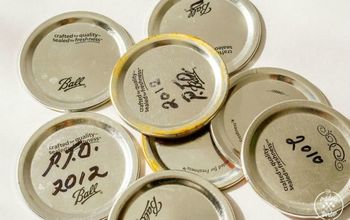How can I change the colors of hydrangea flowers?

I’ve heard that you can change the colors of hydrangeas by using baking soda. Do you know about this?
Related Discussions
GNATS - How to get rid of them?
Somehow my house and garden got tiny gnats that killed my fuchsia plant and fly everywhere. I have tried ALL the Web recommendations - soap and oil dishes, sand in th... See more
Marigolds growing! Should I pinch the buds?
My marigold plants are growing. I heard that pinching the buds until Autumn will allow them to grow without killing the plant. Is this true?
Growing garlic
Growing our first garlic, should we wait until the leaves are drying out before we pick it? Husband picked first one today along with our first potatoes.
How to keep mice out of your garden?
Hi everyone, I have mice in my garden destroying my vegetables and I have also noticed them in the barn and shed. Please can someone tell me how to prevent them from ... See more
What's the best flower/plant to grow in Texas?
I know that opinions vary, but what's your opinion?!I have great luck w Rosemary plants. Green all year long.
Which annual flowers make a colorful border for my house?
This year I am going to plant a colorful border using annuals. What annuals have you used or do you recommend for a border? The area is full to part sun. I am not ... See more
Is it safe to replant peony?
I've heard it might be tricky. Is it true? What is the best way to that? It's this year's plant. No flowers yet.





https://www.gardendebut.com/page/Hydrangea-Color
If you can lower or raise the acidity of your soil by adding things to your soil you can try to change the color of your hydrangeas. Here's some info for you!
https://www.gardenista.com/posts/magic-trick-how-to-make-your-hydrangea-change-color
It's the pH balance. Baking Soda and coffee grounds are two of the items that can effect the color of your flowers. The article posted by Gk is a really good one.
Hi Betsy,
Here's another article to research how to have blue hydrangeas. Wishing you the best.
https://www.popsugar.com/home/How-Change-Color-Hydrangeas-37062661
Hello! The pH of the soil that determines the flower color—specifically, whether or not the hydrangeas are taking up aluminum from the soil. If the flowers are pink, the plant is getting aluminum. If they’re blue, it isn’t.
You can control the color by altering the pH.
Soil testing can determine your pH.
Acidic soil, with a pH lower than 6.0, yields bluish hydrangea blooms. Alkaline soil, with a pH above 7.0, promotes pinks and reds.
pH between 6 and 7, the blooms turn purple or bluish-pink.
To lower your soil pH, add garden sulfur or aluminum sulfate to your soil.
To raise the soil pH, use ground lime.
Hydrangeas are some of my favorite flowering shrubs—- best of luck with your gardening adventures!
Hi Betsy,
Here is a very informative link for you on Hydrangeas and their colors:
https://www.diynetwork.com/how-to/outdoors/gardening/hydrangea-colors
Generally speaking, acidic soil, with a pH lower than 6.0, yields blue or lavender-blue hydrangea blooms. Alkaline soil, with a pH above 7.0, promotes pinks and reds. With a pH between 6 and 7, the blooms turn purple or bluish-pink. To lower your pH, add garden sulfur or aluminum sulfate to your soil.
You can change the pH of the soil. More acidic soils will be blue blooms - 6.5 or higher will give you pink blooms. If you add baking soda, you will make it more basic. If you want pink blossoms, then add it. Otherwise get an acidic fertilizer at a garden store for blue blooms.
Yes you put the baking soda around the base of the plant